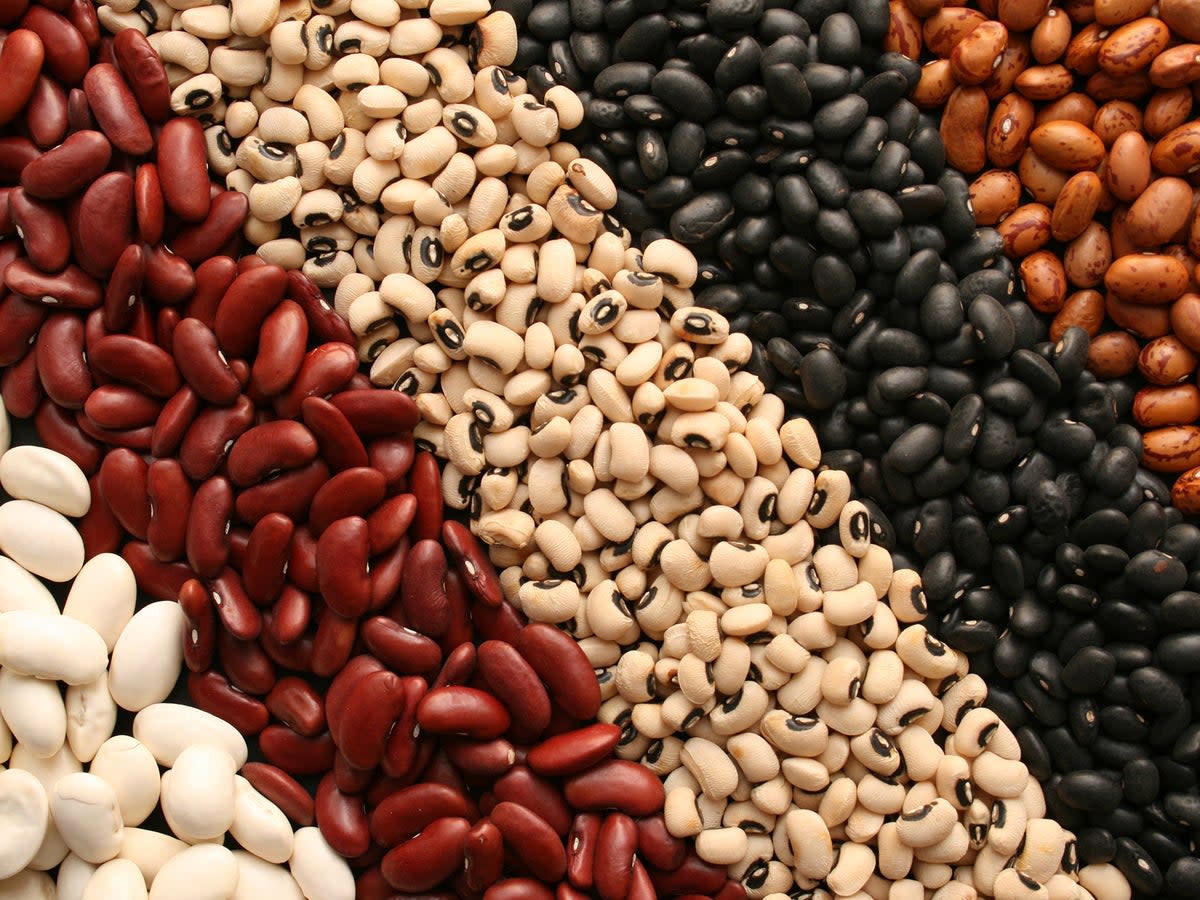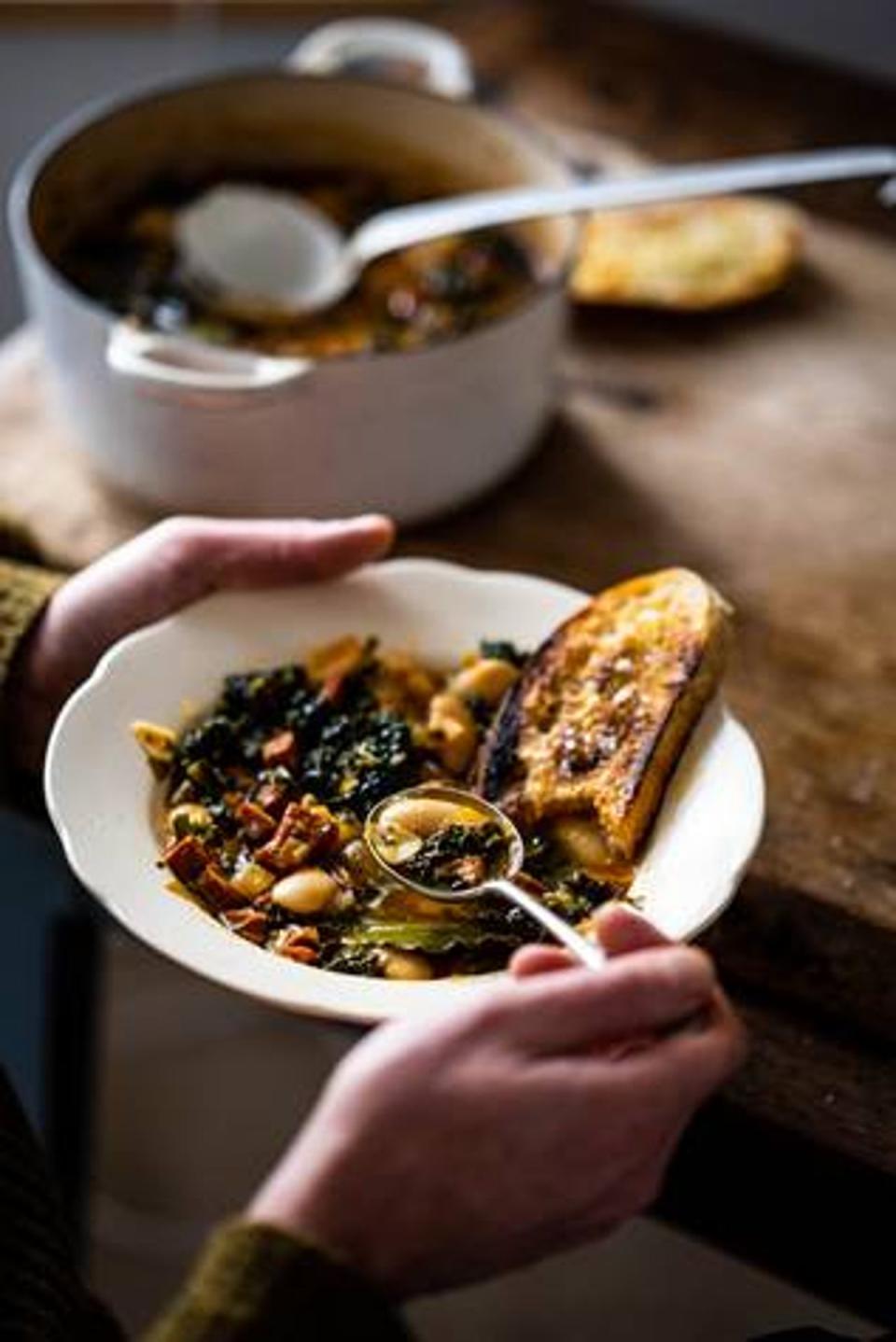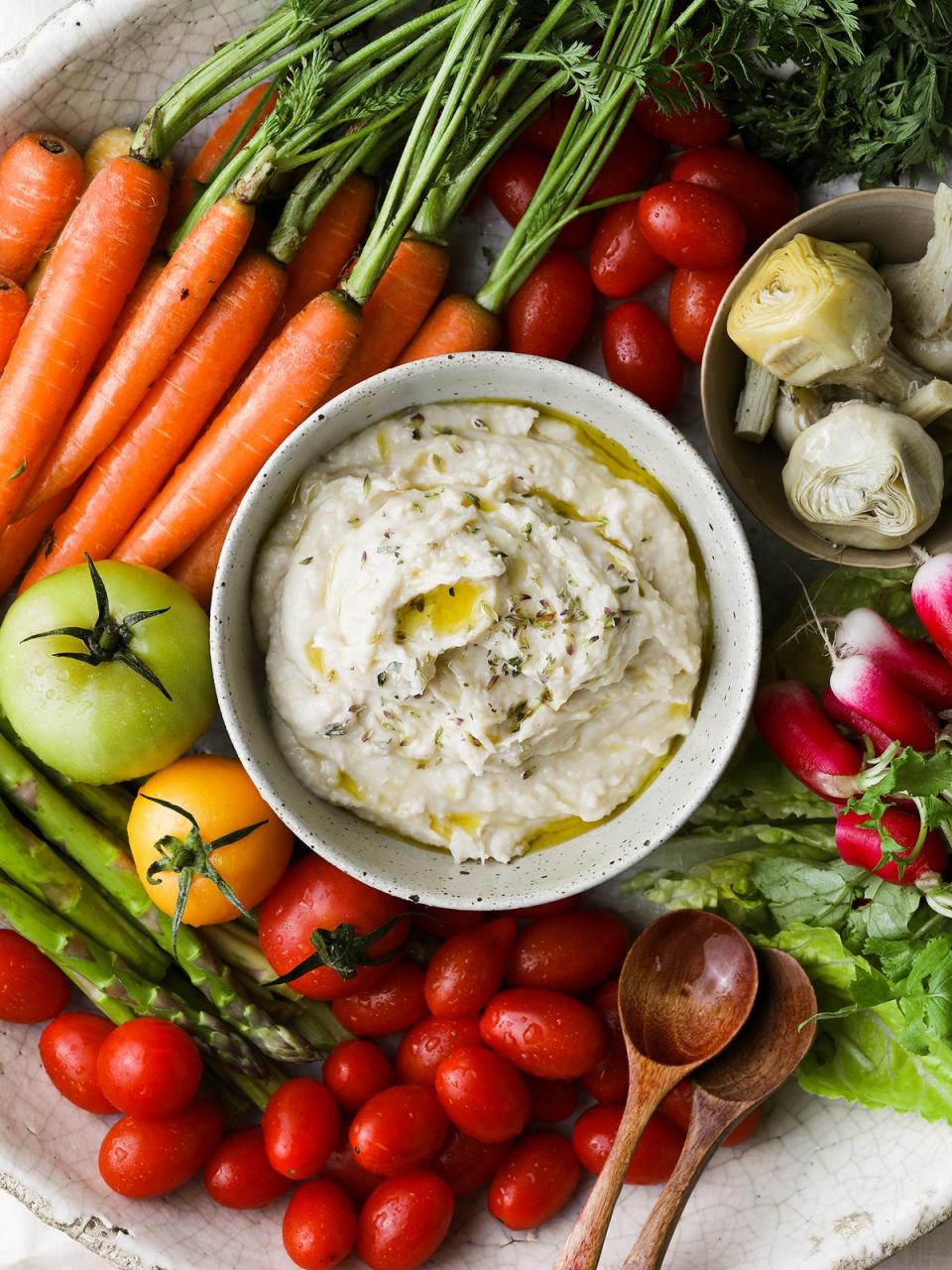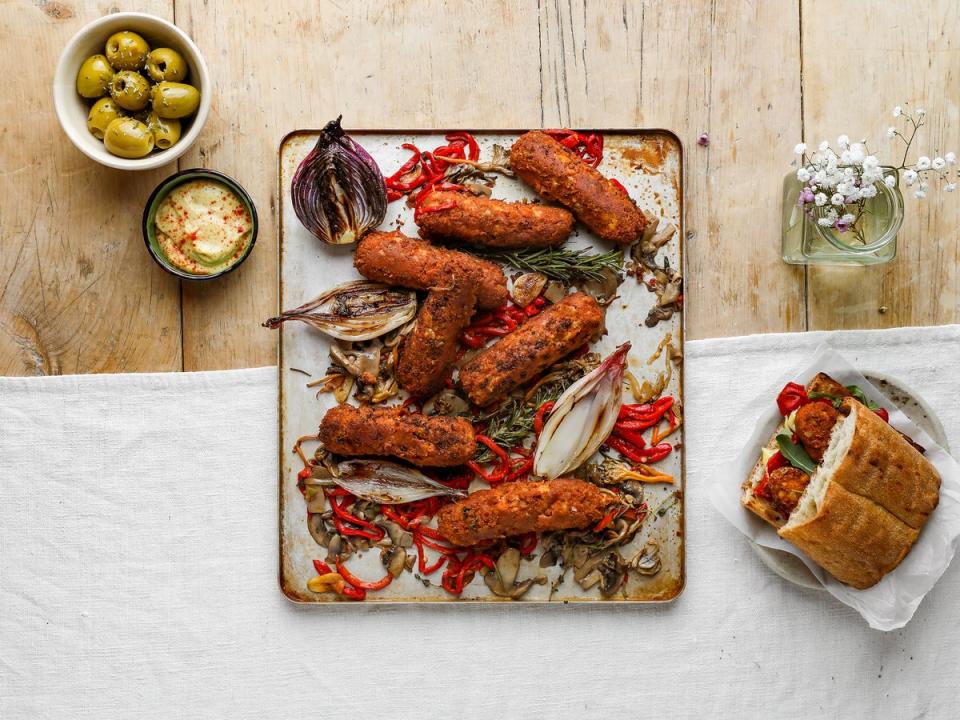Cool beans: Recipes and tips for preparing and cooking dried beans

I find beans entrancing. Their splendid colours, shapes and shiny skins are jewel-like, beautiful and tactile. There are some recipes in which only dried beans, soaked overnight and cooked from scratch, will do. In rich stews, dry beans need to absorb the stock, the flavours and fats of the aromatics and ingredients to an extent that ready-cooked beans can’t match. Small batch beans have their own flavour and an intense creaminess, little else is needed to make a great dish.
A working lunch for Rupert and I at home will often be a bowl of home-cooked beans, simply dressed with oil, vinegar, fresh herbs, salt and pepper, (perhaps with some fresh tomatoes and Spanish sardines on the side) served with large chunks of bread.
The UK and Spain do beans differently. In the UK, we love baked beans from tins, and fresh runner beans, peas and broad beans when in season, but to dry beans and peas naturally on the plant you need a dry climate that gets very hot and very cold and that is not the UK climate and therefore not our culture.
In the Mediterranean, dried beans are commonly bought loose from a trusted market stall holder, preferably local to the area. Some varieties are produced in tiny plots of land in soil that is mineral rich, blessed with lots of rainwater and natural drainage. The bean plants are tended and harvested by hand, the bean is rare and can be expensive but all high quality dry beans double in size when they cook and are highly nutritious. Beans with guaranteed provenance and terroir are often sold in cloth bags and given as gifts to loved ones.
Top tips for soaking, cooking and storing beans
Many of the best recipes will require dried beans soaked in advance of cooking, which needs a little planning. Whilst this is usually required of the best quality beans, it’s also an essential step to ensure that the other flavours and aromatics of the dish are infused into each bean. This step also gives you, the chef, the control in the texture of your beans, depending on your requirement.
Preparation
First you should soak the beans in cold water until they are plump and smooth – usually, 12 hours is enough. Sometimes you may need a few hours more, particularly if the beans are a bit older. When you're soaking the beans, make sure you do this in a spacious bowl – the water should cover the beans by at least 5cm – as larger beans such as judiones, can plump up to double their size.
When the beans are soaked, rinse and put in a heavy cook pot (ideally terracotta) and cover well with fresh water. Bring the beans to a boil, reduce heat to very low and cover. Cooking times vary between 50 and 150 minutes depending on the age of the beans, water hardness and how gently the beans are simmered. Once you’ve cooked them a couple of times you’ll get to know them.
Add salt at the end of cooking, as salting beans before this will toughen their skins. If you’re cooking beans and they are being really slow to absorb liquid; you need to “frighten” or blast the beans: as they break into their first boil, throw in some cold water to halt it. This allows the bean to begin to rehydrate better.
Storing
Preparing your beans in this way doesn’t just mean you have the right amount for your recipe. I always batch-prepare my beans as they can be stored in their water for up to seven days in the fridge. Furthermore, you can freeze them to have ready to hand when you need.
Butter bean soup with kale and chorizo

By: Gill Meller
“This simple rustic soup is hearty and warming and packed full of vegetables and beans. I’m using Judion butter beans in this recipe but you can use Faba beans or Galician white beans instead. I like the smoky depth and warmth that comes from the chorizo but it’ll be just as delicious without it, just add a pinch more paprika. I love to up the veg so I’m adding handfuls of black kale and lots of fresh vibrant parsley.”
Ingredients:
200g dried Judion or Faba beans, soaked overnight in plenty of cold water
2 tbsp good extra virgin olive oil, plus extra for trickling
150g chorizo sausage, cut into rough cubes
2 medium leeks trimmed, rinsed and cut into 1cm rounds
1 onion, chopped
4 garlic cloves, 1 left whole, 3 peeled and thinly sliced
1 tsp of smoked paprika
A sprig of rosemary
2 bay leaves
1.2 litre vegetable stock
A medium colander full of kale leaves, stalks stripped, leaves washed and roughly chopped
A handful of parsley leaves roughly chopped
4 slices of sourdough, or similar good bread
Sea salt and freshly ground black pepper
Method:
1. Drain the soaked beans, rinse well, and then tip them into a saucepan. Cover with plenty of fresh water, set over a high heat and bring to a simmer. Cook the beans for 35-45 minutes or until just tender. Drain and set aside. Warm a heavy-based saucepan over a medium heat and add the olive oil. Scatter in the chorizo pieces and fry them for 2-3 minutes to release some of the lovely well-flavoured oil. Add the prepared leeks, onion and sliced garlic, along with the rosemary, bay leaves and smoked paprika. Season everything lightly with a pinch of salt and a twist of black pepper and cook, stirring regularly, for 6-8 minutes. Add the cooked beans and pour in the stock. Bring the soup up to a gentle simmer and cook uncovered for 12-15 minutes.
2. At this point add the roughly chopped kale, stir it into the soup and bring back to a simmer. After another 5-10 minutes add the chopped parsley and season well with sea salt and freshly ground black pepper. Take the soup off the heat and let it stand.
3. Meanwhile, toast the pieces of bread on each side, trickle with olive oil, rub with the reserved garlic and sprinkle with flaky sea salt.
4. To serve, ladle the soup into large soup plates or bowls and finish with a healthy trickle of extra virgin olive oil. Serve with the toasted bread.
Little tip: You can customise this soup by swapping in all sorts of other ingredients. Try different beans, chard instead of kale, and of course, you can leave out the spicy sausage.
Brindisa’s butter bean and marinated artichoke dip

Makes: 750g
Ingredients:
1 jar Navarrico JudioÌn Butter Beans (700g), rinsed and drained
200g Navarrico Marinated Artichokes (about 4), chopped
2 tbsp Brindisa Arbequina extra virgin olive oil, plus a little to finish
2 tsp lemon juice
¼ tsp salt
A small pinch white pepper
3 tbsp cold water
Parsley leaves for garnish
Method:
1. Put all the ingredients – except water – in a food processor. Pulse until fairly smooth. Add water and pulse to incorporate.
2. Serve misted/very little drizzled with olive oil and garnish with parsley.
3. To use as a spread, omit the water.
Brindisa’s smoky chickpea and lentil sausages

Serves: 4
Ingredients:
100g Termens Spanish walnuts, chopped medium-fine
100g panko breadcrumbs
500g cooked La Salmantina Castellano chickpeas, rinsed and thoroughly drained (225g uncooked weight)
500g cooked Luengo Pardina lentils, rinsed and thoroughly drained (160g uncooked weight)
100g Navarrico Piquillo pepper strips
1 plump clove garlic, minced/very finely grated
4 tbsp Brindisa Arbequina extra virgin olive oil, plus more for frying
1 tbsp UnioÌ Moscatel vinegar
1½ tsp Netasa pimentoÌn dulce
1½ tsp Catalan oregano rubbed from the bunch (otherwise 1 tsp other oregano)
1½ tsp salt
¼ tsp sugar
¼ tsp black pepper
Method:
1. Put the walnuts and breadcrumbs in a large mixing bowl. Add half the chickpeas and lentils.
2. Add the remaining chickpeas and lentils to the food processor along with the rest of the ingredients. Process to a fairly smooth paste. Add to the mixing bowl.
3. Combine everything well. Refrigerate the mixture until thoroughly chilled.
4. Shape the mixture into 110g rolls, 12cm long. Make the number of sausages that fit comfortably in the pan and return the remaining mixture to the fridge.
5. Place a large frying pan over moderate heat. Add a little olive oil. Fry the sausages on all sides until a deep golden brown.
Mash version(makes 12 x 110g sausages):
1. Put some sausage mixture in a saucepan and mash with a potato masher.
2. Warm over a low heat and stir in stock a bit at time until desired consistency (about 200-250ml for a half recipe). Check for salt.
3. Serve drizzled with Brindisa Arbequina olive oil.
Notes: Half the lentil and chickpea mixture are left whole to appreciate the individual flavours and textures. Remaining mixture can be made into sausages, individually wrapped and frozen. Defrost in the fridge and cook from chilled. Accompany with a fresh tomato salsa picanteÌ (grate and sieve fresh tomatoes; stir in some very finely chopped Perello guindilla hot green chillies and splash of their liquid).
Production notes: Sausages can break up a bit when being cut because of whole chickpeas.
Monika Linton is the founder of Brindisa. For more information, inspiration and recipes, visit brindisa.com

